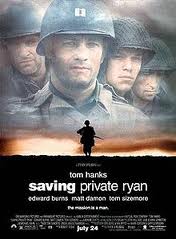
I then thought others who are not on that forum might also be interested because it's so easy for multiple characters to get out of control.
Controlling multiple characters is a bit like driving a team of charging horses that all want to go in different directions. You have to know where you want them to take you and how, and that’s where your choice of structure comes in. So none of this is academic, it's all about the nitty gritty of how you create and handle all of these stories. Here is the correspondence. Hope you find it interesting
Writer: How many is too many main characters in an ensembled cast?
Linda
Good question. There are all kinds of plotting issues connected with Ensemble pieces. It's really easy to get into a mess with this kind of piece because the term 'ensemble' is often used very loosely to mean every film that has lots of characters and isn't 'one hero on a single journey'. That means people are lumping togther films as structurally different as Pulp Fiction and American Beauty, which is utterly unhelpful.
I have written a lot about how to construct ensemble and nonlinear multiple storyline films in my book The 21st Century Screenplay because, as a writer, nobody could give me answers about how to construct flashback and ensemble films.
Okay. I am assuming you are thinking here of feature film about a group of characters with multiple storylines that run simultaneously in the same time frame (If you want to use time jumps, flashbacks etc they are very different structurally and in plotting terms. I also write about that in my book) .
There are two main types of structure here, with different plotting issues, each suitable for different kinds of story. The different plotting issues depend on whether you want to do a story about group interacting together, working together in some way on some kind of quest, reunion or siege situation (so your main aim is to explore the group dynamic and the tensions within the group, as in The Full Monty or LIttle Miss Sunshine or The Hangover ) OR whether you want to pursue a group of individuals, who are connected by theme but who go off into their individual stories - as, for example, in Nashville or Traffic, where the themes are, respectively, 'The strange heartbreaking town of Nashville' or 'The unwinnable war on drugs'
Obviously, your plotting problems are different if you have to keep a group of characters together on an 'adventure' while exploring the various personality tensions between them, than where you want to have a group of characters who don't, in most cases interact at all. In the first case (which I call ‘Multiple Protagonist’ structure), you need to run a number of story strands that will cover the 'adventure' they're all involved in, plus all of the relationships between the characters now and in the past (if relevant). That's the form that's used in most TV series about groups of doctors, lawyers, cops whatever. It's easier to think of these as 'different versions of the same protagonist'. Your big plotting problem here is that you have so many strands (sometimes about 30) to run that you need to combine several story strands in the same scene. You can usually only properly cover about 6 characters in this form,which is why TV shows usually have a maximum of about 6 or so characters. A little motto to help you work out whether you need this form is that multiple protagonist form is ‘same team, same adventure’ .
The other sort of multiple storyline/same linear time frame ensemble movie (Traffic, Nashville, Lantana etc,which I call ‘Tandem narrative, because it’s equally important stories running in parallel in the same time frame) requires you to construct separate stories for each character you’re following as they go off on their separate ‘adventures’. Clearly a different plotting problem. Your motto here is: ‘same theme, different adventures.' In these films you can run three-act, two-act or one-act stories for your various characters.
But the big issue about all ensemble films is that you need to plot out each little strand or storyline first THEN interweave. Too easy to get lost! Use index cards,
See my website for an intro to all this www.lindaaronson.info My book '21st Century Screenplay covers it in depth. For TV try my ebook 'Television Writing: The ground rules of series, serials and sitcom'.
Writer: Linda thank you,
I was aiming for a group of characters that go on an adventure and they work together or try to work together but eventually get separated and must overcome the adventure and the same goals separately. That was very helpful.
Linda
Ah, that's interesting! Because that means that you start out with a group quest, in classic multiple protagonist style, with them all working (and bickering) together (tensions, conflicts, unfinished emotional business as the ‘adventure’ or ‘quest’ proceeds etc – think of Saving Private Ryan, or Galaxy Quest) with a lot of story strands per scene, then, when you split them up you'll be facing tandem narrative problems because you'll have to follow each separately, creating and running separate storylines then jumping between stories as they all try to reach the goal in their separate ways. I’d say about six characters then, max. That’s probably all you’ve got time for.
You see what I mean about it being useful to think of them all being versions of the same protagonist, each reaching the goal in their own way? From what you are telling me, that’s what your story is really all about, how these separate versions of the same protagonist each reaches the goal.
You’ll have to create a separate little 'hero's journey' for each I’d guess the moment they split up is probably the first act turning point in each of their individual stories. In other words, it’s the same scene for all of their stories. That's means you only have to write the second and third act for each separate storyline, probably pulling them into some kind of group climax (maybe not, though, maybe you’ll do each climax separately ).
You are actually doing something a little like Atonement, where the wrongful arrest of Jamie is the first act turning point for all 3 characters, then each goes their separate way and we have a story for each. Multiple storyline films often pivot on the first act turning point like that by the way. For example, the repetitions in Run Lola Run and Groundhog Day also start at the first act turnign point. I'd say six-ish characters then, personally.
I'd say with this project, just take your time. Hasten slowly. Work out your storylines first. Remember, because you have so many stories, none of them will be very long. Set up how each character is different from the others in the first act.
By the way, maybe another possibility to consider is whether you’d get more mileage character-wise by making them split up into twos – fighting all the way. Just a thought.
I hope it’s a great success for you. Good luck with it!
 RSS Feed
RSS Feed


